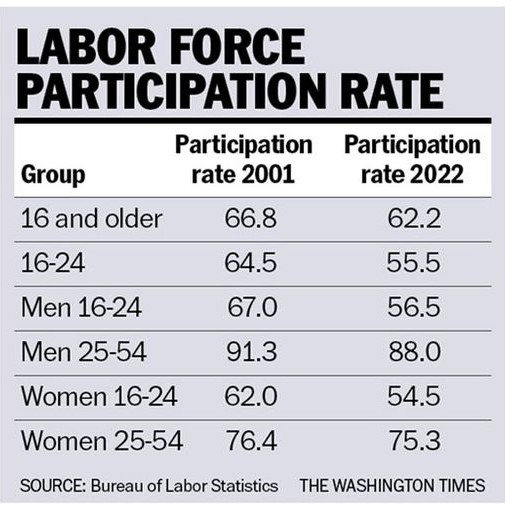“Note: This column was written by an actual person and not an artificial intelligence program.”
Such disclaimers might well become common in the near future — with the advent of Open-AI’s ChatGPT, which can write essays or even term papers. Robots are rapidly taking over many tasks that people thought impossible for a machine to do — including written content that appears in newspapers and elsewhere.
Think about jobs that you had in the past that can or soon will be done by machines. When I was a teenager, I spent one summer working on a dairy farm, doing such things as lifting hay bales onto tractor-driven wagons and then stacking the same hay bales in the barn. All of that miserable work was automated long ago — good riddance. (The average farmer now feeds about 166 people, up from only 26 people in 1960.) While in school, I also worked as a bag boy and cashier in a supermarket. Much of that work is now done by the customer at self-checkout stations.
Much manufacturing, like auto assembly, has long been automated, and transportation is becoming increasingly automated by self-driving trucks and passenger vehicles. With each wave of machines replacing people, there are always claims that there will be no jobs in the future — yet new jobs always appear. In the area around Nottingham, England, in 1811, a rebellion began of textile workers — known as Luddites — who feared the new textile factories were destroying their jobs. Over time, the name has come to mean a person opposed to labor-saving new technologies.
The U.S. is faced with a curious situation where there is a so-called labor shortage, yet the “labor force participation rate” has been falling since March 2000 after having risen for most of the previous 30 years. There is no labor shortage; there is merely a shortage of people with the requisite skills willing to work for the wages businesses are offering. Many people are choosing leisure over work because the financial benefits they receive from not working exceed the after-tax benefits and the loss of freedom from having a regular job. The labor force participation rate is defined as “the number of people in the labor force as a percentage of the civilian noninstitutional population that is either working or actively looking for work.” It is considered a good measure of the overall health of the economy.
Traditionally, about 90% of men aged 25 to 54 were in the labor force. Teenagers and young adults still in school have always had lower labor force participation rates than adults. But now we have many young men, untethered by school or a job, and most importantly, an intact family, who are living on welfare or from selling illegal drugs or committing other crimes.
The labor force participation rate for women is, on average, about 12 points lower than for men, and the rate for Black men is, on average, about 4 points lower than for white men. Yet the labor force participation for Black women is about 3 points higher than for White women. This probably reflects the fact that marriage rates for Black women are lower than for White women, which means that more of them need to support themselves.
Crime rates rose in the U.S. after World War II, peaking in the early 1990s and then falling until the last couple of years. Most crime, particularly violent crime, is committed by young men aged 16-24. No one fears a middle-aged or older woman of any race, an older man, or a young child when walking down a dark street behind them. Back in 1973, George Gilder (who has written important and bestselling books on economics and technology) wrote “Sexual Suicide,” in which he correctly foresaw and predicted the breakdown of the family and what would happen to young men who were no longer under the control of a mother or strong father who lived with them, or a wife. While women tend to be stabilizing and civilizing, young men under no one’s control are often highly destructive to both society and themselves.
We are now left with an entrepreneurial elite who, through the use of AI and other technologies, are making unparalleled advances in the biological and physical sciences. These advances promise to cure almost all diseases and even reverse aging. The productivity advances brought about by chemistry and robots are on the verge of providing enough to eliminate hunger and human drudgery.
Rather than celebrate this great reduction in human misery, a self-appointed elite has emerged from the universities and media, seemingly intent on destroying the economic system that enabled the great prosperity, opportunity, and the accompanying basic liberties. In addition, there is an undereducated and undisciplined portion of the population that is benefiting from many of the advances of the technological revolution but contributing almost nothing of value to it. If these destructive and dysfunctional parts of the population are allowed to grow, they may well bring down the golden city on the hill.
• Richard W. Rahn is chairman of the Institute for Global Economic Growth and MCon LLC.
https://www.washingtontimes.com/news/2023/jan/30/ai-advances-enabled-by-our-innovative-laissez-fair/
© Copyright 2023 The Washington Times, LLC.

